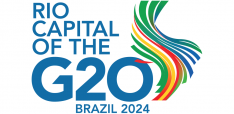The Paris Agreement to Strengthen role of Networks in Climate Policy & Technology

Stephen Minas explores how the Climate Technology Centre Network represents an important form of cross border collective action to help address climate change.
The intensification of environmental crisis and the shifting terrain of global governance are bringing about profound ecological and legal uncertainty. As an important response to these challenges, the Paris Agreement under the United Nations Framework Convention for Climate Change (UNFCCC) should be welcomed for many reasons. One reason is that the Paris outcome commits nations to strengthening cooperation on climate technology (including but not limited to clean energy) through the Convention’s Technology Mechanism, which has begun to harness a diverse network of public and private actors to assist nations attempting to transition to low-emissions and climate-resilient economies.
Networks in global climate governance
Concurrent with intergovernmental negotiations under the UNFCCC, a broad array of public, private and hybrid mechanisms of climate governance have developed both outside and alongside the public international law framework – with numerous forms of connections and tensions. These hybrid mechanisms have the potential to be significant force multipliers for the Convention, through the marshalling and application of influence, expertise, technology and finance beyond the capacity of any one international organization.
The global governance of climate change has its origins in public international law. Agreed in 1992, the climate convention builds on the principles embodied in the Rio Declaration on Environment and Development. The UNFCCC commits nations to ‘stabilization of greenhouse gas concentrations in the atmosphere at a level that would prevent dangerous anthropogenic interference with the climate system’. In the years since 1994, negotiators have grappled with the difficult task of bringing the convention’s objective within reach.
It has become commonplace to contrast the state-centric nature of climate diplomacy, focused on the UNFCCC, with calls for a more multi-level approach, inclusive of non-state and sub-state actors. In fact, at the Villach conference on climate variation in 1985, it was to the scientists present that United Nations Environment Programme (UNEP) executive director Mostafa Tolba addressed his call to ‘set the ball rolling in the direction of negotiation’. Today, climate diplomacy again encompasses more than just national delegations.
Alongside the UNFCCC negotiations and implementing bodies, recent years have seen what Rosa Morales, representing the outgoing Peruvian presidency of the Conference of Parties, has called ‘an exponential growth of climate action’. Collective action to deal with climate change is now pursued through a diffusion of forums.
Much of this activity is organized through networks of actors, of varying degrees of cohesion, including: Networks of subnational governments that facilitate cooperation on climate measures between members and undertake advocacy in the UN climate negotiations; networks that build on existing regional architecture to conduct research, share knowledge and support policy development in participating countries; and networks of judges such as the Asian Judges Network on Environment. A further notable development in climate governance has been the growth of South-South networks of developing country actors.
Many climate networks cannot be sorted according to a matrix of national, international, public and private actors. Multi-stakeholder partnerships (MSPs) have played an important role. MSPs emerged as a tool of governance at the 2002 World Summit on Sustainable Development (WSSD) to complement rather than supplant intergovernmental agreements.
One such MSP is the Renewable Energy Policy Network for the 21st Century (REN21), a self-described ‘coalition of the willing’ with the aim of facilitating a global transition to renewable energy. The SIDS Lighthouses Initiative is another example. Announced during the UN Secretary-General’s 2014 Climate Summit in New York, the Initiative has the goal of accelerating the deployment of renewable energy in small island developing states (SIDS).
The rapid development of transnational mechanisms of governance such as networks holds out the prospect of regulatory innovation to better address cross-border challenges. This potential is premised, in part, on the increased scope, in a polycentric environment, for experimental policy and its dissemination. At present, the policy area of climate change is characterized by a high level of institutional experimentation.
The UNFCCC Technology Mechanism
In 2010, in the wake of the troubled Copenhagen climate summit, the world’s climate negotiators agreed to establish a Technology Mechanism in order to facilitate technology development and transfer in support of climate change mitigation and adaptation. The Technology Mechanism consists of a Technology Executive Committee (TEC) and a Climate Technology Centre and Network (CTCN). The TEC was tasked with, among other things, policy analysis, recommending actions and facilitating cooperation for technology development and transfer. The CTCN facilitates a network of organizations in order to provide technical assistance to developing countries, among other things.
In turn, the CTCN consists of a Climate Technology Centre and a Network. The Climate Technology Centre is responsible for managing the response to requests from developing countries for assistance. The Network’s members are responsible for the ‘substantive work’ of responding to requests from developing countries. The Network is defined very broadly to include ‘relevant institutions capable of responding to requests from developing country Parties’.
Over one hundred stakeholders had become members of the Network. The members come from all inhabited continents and from both developed countries and developing countries, alongside international organizations. The Network’s members represent a broad range of types of institution, with private sector, non-governmental and academic and research organizations collectively accounting for around seventy per cent of the membership.
The CTCN became fully operational in December 2013. Over thirty developing countries have submitted to the CTCN more than seventy requests for technical assistance. Almost half of the requests have focused on technology for climate change mitigation and low carbon development, with the balance of requests evenly divided between adaptation and requests relating to both mitigation and adaptation. In both mitigation and adaption, the requests have related to a broad range of sectors. Interestingly, while the proponents of the vast majority of requests have been national government agencies, subnational governments, private companies and academia have also issued requests.
The CTCN functions as a hybrid network, with public, private, national and subnational actors present in both the requests for technical assistance and the CTCN responses (which also involve international organizations). This is illustrated by many of the accepted technical assistance requests. For example, a request from Indonesia for technology transfer to treat palm oil production waste was initiated by a university at the request of elements of the palm oil industry, with Indonesian government agencies serving as key stakeholders.
In responding to technical assistance requests, the Climate Technology Centre draws on technical and regional expertise from an equally diverse range of actors in the Network. These include private sector organizations, public agencies, NGOs, research institutes and intergovernmental organizations such as the World Intellectual Property Organization. Responses to technical requests may engage multiple areas and processes of international and domestic law and regulation.
The CTCN’s composition and practices epitomize the rise of network-centric governance concerning climate change. Although anchored in the public international law framework of the UNFCCC, the CTCN is at core a hybrid network, through which research institutions, businesses, NGOs and multi-stakeholder partnerships alongside public authorities participate in influencing the norms and processes of climate technology development and transfer. Through the CTCN’s technical assistance and capacity-building work, these actors participate in the cross-border spread and evolution of norms, as well as in the diffusion of ‘legal technologies’ concerning climate change mitigation and adaptation.
Climate change presents a challenging of ever-increasing urgency to the international community. Since the agreement of the UNFCCC in 1992, much of the international coordination and collective action concerning climate change has been channelled through public international law frameworks, most notably under the UNFCCC but also under other intergovernmental agreements. Public international law continues to be salient to the global response to climate change.
Recent years have seen the growth in processes of cross-border cooperation on climate change which take place beyond, alongside or in tandem with the UNFCCC. Here, I have discussed only one form into which this cross-border cooperation is organized, that of networks. Of course, transnational governance cannot simply be equated with, or confined to, networks. There are many processes of transnational governance which do not utilise networks. The network has been discussed here as a particularly prominent form of organizing collective action on climate change.
As the example of the CTCN shows, networks need not be set up in opposition to public international law and diplomacy, either conceptually or normatively. Established by and nested within conventional treaty law and operating under detailed guidelines from the Conference of Parties, the CTCN nevertheless draws its capacity for action from its network of external actors. This hybridity may be an important factor in determining the ability of networks such as the CTCN to act as force multipliers for public international law frameworks addressing global policy challenges.
Stephen Minas, a Research Fellow at the Transnational Law Institute, King’s College London and member of the IUCN World Commission on Environmental Law, attended the COP21 summit. This is an updated extract of a TLI Think! Paper, the full text of which is available here.

